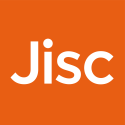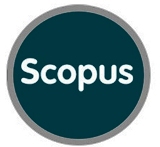FEAR OF MISSING OUT (FOMO) Y EL YO EXTENDIDO DIGITAL: OTRO PUNTO DE VISTA SOBRE EL INTERCAMBIO DE EXPERIENCIAS TURÍSTICAS EN LAS REDES SOCIALES
Agencias de apoyo
- Este trabajo fue realizado con el apoyo de la Coordinación para el Perfeccionamiento del Personal de la Enseñanza Superior - Brasil (CAPES) - Código de Financiamiento 001 y de la Pro-Rectoría de Investigación e Innovación de la Universidad Federal de Pernambuco (UFPE), que concedió ayuda financiera para la traducción del artículo.
Resumen
El objetivo de este estudio era investigar cómo el fear of missing out (FOMO) y el yo digital extendido (DES) se relacionan con los hábitos (HSTE) y las razones (RSTE) de los individuos para compartir experiencias turísticas en las redes sociales. Se llevó a cabo una encuesta en línea con una muestra de 371 participantes y los datos se analizaron mediante modelos de ecuaciones estructurales (SEM). Los resultados mostraron la existencia de relaciones entre FOMO -> HSTE, FOMO -> RSTE y DES -> RSTE. También se halló una correlación positiva entre FOMOß <-> DES. Este estudio avanza en la comprensión del consumidor turístico analizando su comportamiento en las redes sociales durante los viajes.
Descargas
-
Resumen617
-
PDF INGLÉS 656
-
PDF ESPAÑOL656
Citas
Arica, R., Cobanoglu, C., Cakir, O., Corbaci, A., Hsu, M. J., & Della Corte, V. (2022). Travel experience sharing on social media: effects of the importance attached to content sharing and what factors inhibit and facilitate it. International Journal of Contemporary Hospitality Management, 34 (4), 1566-1586. https://doi.org/10.1108/IJCHM-01-2021-004
Bagozzi, R. P., & Yi, Y. (1991). Multitrait-multimethod matrices in consumer research. Journal of Consumer Research, 17 (4), 426-439. https://doi.org/10.1086/208568
Barasch, A., Zauberman, G., & Diehl, K. (2018). How the intention to share can undermine enjoyment: Photo-taking goals and evaluation of experiences. Journal of Consumer Research, 44 (6), 1220-1237. https://doi.org/10.1093/jcr/ucx112
Baumeister, R. F. (1998). The self. In D. T. Gilbert, S. T. Fiske, & G. Lindzey (Eds.), Handbook of social psychology (4th ed.), pp. 680-740. New York, NY: McGraw-Hill.
Baumeister, R. F. (2014). Self-regulation, ego depletion, and inhibition. Neuropsychologia, 65, 313-319. https://doi.org/10.1016/j.neuropsychologia.2014.08.012
Belk, R. W. (1988). Possessions and the extended self. Journal Of Consumer Research, 15 (2), 139-168. https://doi.org/10.1086/209154
Belk, R., & Hsiu‐Yen Yeh, J. (2011). Tourist photographs: Signs of self. International Journal of Culture, Tourism and Hospitality Research, 5 (4), 345-353. https://doi.org/10.1108/17506181111174628
Belk, R. W. (2013). Extended self in a digital world. Journal Of Consumer Research, 40 (3), 477-500. https://doi.org/10.1086/671052
Belk, R. W. (2014). The extended self unbound. Journal of Marketing Theory and Practice, 22 (2), 133-134. https://doi.org/10.2753/MTP1069-6679220202
Belk, R. (2016). Extended self and the digital world. Current Opinion in Psychology, 10, 50-54. https://doi.org/10.1016/j.copsyc.2015.11.003
Bentler, P. M. (1990). Comparative fit indexes in structural models. Psychological Bulletin, 107(2), 238–246. https://doi.org/10.1037/0033-2909.107.2.238
Bentler, P. M., & Bonett, D. G. (1980). Significance tests and goodness of fit in the analysis of covariance structures. Psychological Bulletin, 88 (3), 588–606. https://doi.org/10.1037/0033-2909.88.3.588
Bigne, E., Simonetti, A., Ruiz, C., & Kakaria, S. (2021). How online advertising competes with user-generated content in TripAdvisor. A neuroscientific approach. Journal of Business Research, 123, 279-288. https://doi.org/10.1016/j.jbusres.2020.10.010
Bollen, K. A. (1989). A new incremental fit index for general structural equation models. Sociological Methods & Research, 17 (3), 303-316. https://doi.org/10.1177/0049124189017003004
Brammer, S. E., Punyanunt-Carter, N. M., & Duffee, R. S. (2022). Oversharing on social networking sites: A contemporary communication phenomenon. Computers in Human Behavior Reports, 8, 100236. https://doi.org/10.1016/j.chbr.2022.100236
Buijs, V. L., Jeronimus, B. F., Lodder, G. M., Steverink, N., & De Jonge, P. (2021). Social needs and happiness: A life course perspective. Journal of Happiness Studies, 22 (4), 1953-1978. https://doi.org/10.1007/s10902-020-00287-9
Cao, X., Luo, Z., Qiu, J., & Liu, Y. (2022). Does ostracism impede Chinese tourist self-disclosure on WeChat? The perspective of social anxiety and self-construal. Journal of Hospitality and Tourism Management, 50, 178-187. https://doi.org/10.1016/j.jhtm.2022.02.013
Chou, H. T. G., & Edge, N. (2012). “They are happier and having better lives than I am”: the impact of using Facebook on perceptions of others' lives. Cyberpsychology, behavior, and social networking, 15 (2), 117-121. https://doi.org/10.1089/cyber.2011.0324
Chou, S. W., & Hsu, C. S. (2018). An empirical investigation on knowledge use in virtual communities–A relationship development perspective. International Journal of Information Management, 38 (1), 243-255. https://doi.org/10.1016/j.ijinfomgt.2017.10.003
Coyne, S. M., Rogers, A. A., Zurcher, J. D., Stockdale, L., & Booth, M. (2020). Does time spent using social media impact mental health?: An eight year longitudinal study. Computers In Human Behavior, 104, 106160. https://doi.org/10.1016/j.chb.2019.106160
Dedeoglu, B. B. (2019). Are information quality and source credibility really important for shared content on social media? The moderating role of gender. International Journal of Contemporary Hospitality Management, 3 1(1), 513-534. https://doi.org/10.1108/IJCHM-10-2017-0691
Dedeoğlu, B. B., Taheri, B., Okumus, F., & Gannon, M. (2020a). Understanding the importance that consumers attach to social media sharing (ISMS): Scale development and validation. Tourism Management, 76, 103954. https://doi.org/10.1016/j.tourman.2019.103954
Dedeoğlu, B. B., Van Niekerk, M., Küçükergin, K. G., De Martino, M., & Okumuş, F. (2020b). Effect of social media sharing on destination brand awareness and destination quality. Journal of Vacation Marketing, 26 (1), 33-56. https://doi.org/10.1177/1356766719858644
De Guimarães, J. C. F., Severo, E. A., Dorion, E. C. H., Coallier, F., & Olea, P. M. (2016). The use of organisational resources for product innovation and organisational performance: A survey of the Brazilian furniture industry. International Journal of Production Economics, 180, 135-147. https://doi.org/10.1016/j.ijpe.2016.07.018
D’souza, C., Apaolaza, V., Hartmann, P., & Nguyen, N. (2023). The consequence of possessions: Self-identity, extended self, psychological ownership and probabilities of purchase for pet’s fashion clothing. Journal of Retailing and Consumer Services, 75, 103501. https://doi.org/10.1016/j.jretconser.2023.103501
Du, X., Liechty, T., Santos, C. A., & Park, J. (2020). ‘I want to record and share my wonderful journey’: Chinese Millennials’ production and sharing of short-form travel videos on TikTok or Douyin. Current Issues in Tourism, 25 (21), 3412-3424. https://doi.org/10.1080/13683500.2020.1810212
Eitan, T., & Gazit, T. (2023). No social media for six hours? The emotional experience of Meta's global outage according to FoMO, JoMO and internet intensity. Computers in Human Behavior, 138, 107474. https://doi.org/10.1016/j.chb.2022.107474
Fernandes, T., & Moreira, M. (2019). Consumer brand engagement, satisfaction and brand loyalty: a comparative study between functional and emotional brand relationships. Journal of Product & Brand Management, 28 (2), 274-286. https://doi.org/10.1108/JPBM-08-2017-1545
Filieri, R., Acikgoz, F., Ndou, V., & Dwivedi, Y. (2021). Is TripAdvisor still relevant? The influence of review credibility, review usefulness, and ease of use on consumers’ continuance intention. International Journal of Contemporary Hospitality Management, 33 (1), 199-223. https://doi.org/10.1108/IJCHM-05-2020-0402
Fornell, C., & Larcker, D. F. (1981). Structural Equation Models with Unobservable Variables and Measurement Error: Algebra and Statistics. Journal of Marketing Research, 18 (3), 382-388. https://doi.org/10.1177/002224378101800313
Hair, J. F., Black, W. C., Babin, B. J., & Anderson, R. E. (2014). Multivariate data analysis: Pearson new international edition. (7a ed.). Pearson Education Limited, New York.
He, J., Xu, D., & Chen, T. (2021). Travel vlogging practice and its impacts on tourist experiences. Current issues in Tourism, 25 (15), 2518-2533. https://doi.org/10.1080/13683500.2021.1971166
Hunt, M. G., Xu, E., Fogelson, A., & Rubens, J. (2023). Follow Friends One Hour a Day: Limiting Time on Social Media and Muting Strangers Improves Well-Being. Journal of Social and Clinical Psychology, 42 (3), 187-213. https://doi.org/10.1521/jscp.2023.42.3.187
James, W. (1890). The Principles of Psychology, 1, New York: Henry Holt.
Kang, M., & Schuett, M. A. (2013). Determinants of sharing travel experiences in social media. Journal of Travel & Tourism Marketing, 30 (1-2), 93-107. https://doi.org/10.1080/10548408.2013.751237
Kemp, S. (2023). DataReportal. Instagram users, stats, data & trends. Recuperado de https://datareportal.com/essential-instagram-stats
Kim, J., & Tussyadiah, I. P. (2013). Social networking and social support in tourism experience: The moderating role of online self-presentation strategies. Journal of Travel & Tourism Marketing, 30 (1-2), 78-92. https://doi.org/10.1080/10548408.2013.751220
Kline, R. B. (2011). Principles and practice of structural equation modeling. (3a ed.). The Guilford Press. New York.
Lee, M., Lee, J., & Quilliam, E. (2019). Motivations for sharing marketer-generated content on social media: a comparison between American and Korean college students. Journal of Consumer Marketing, 36 (1), 206-217. https://doi.org/10.1108/JCM-07-2016-1875
Li, C. S., Zhang, C. X., Chen, X., & Wu, M. S. S. (2021). Luxury shopping tourism: views from Chinese post-1990s female tourists. Tourism Review, 76 (2), 427-438. https://doi.org/10.1108/TR-08-2019-0335
Liu, B., Moyle, B., & Kralj, A. (2022). Sharing tourism experiences on social media: A conceptual model. In CAUTHE 2022 conference online: Shaping the next normal in tourism, hospitality and events: Handbook of abstracts of the 31st annual conference: Handbook of abstracts of the 31st annual conference (p. 51). Council for Australasian University Tourism and Hospitality Education (CAUTHE).
Lo, I. S., & Mckercher, B. (2015). Ideal image in process: Online tourist photography and impression management. Annals of Tourism Research, 52, 104-116. https://doi.org/10.1016/j.annals.2015.02.019
Luo, M., & Hancock, J. T. (2020). Self-disclosure and social media: motivations, mechanisms and psychological well-being. Current opinion in psychology, 31, 110-115. https://doi.org/10.1016/j.copsyc.2019.08.019
Lyu, S. O. (2016). Travel selfies on social media as objectified self-presentation. Tourism Management, 54, 185-195. https://doi.org/10.1016/j.tourman.2015.11.001
Malhotra, N. K. (2019). Pesquisa de Marketing: uma orientação aplicada. (7a ed.). Bookman Editora.
Mardia, K. V. (1971). The effect of nonnormality on some multivariate tests and robustness to nonnormality in the linear model. Biometrika, 58 (1), 105-121. https://doi.org/10.1093/biomet/58.1.105
Marôco, J. (2010). Análise de equações estruturais: fundamentos teóricos, softwares & aplicações. Lisboa, PSE.
Mccullough, K. M., & Lester, J. N. (2021). Masculinities made visible: A critical discursive psychology study of Instagram photos. Psychology of Men & Masculinities, 22 (4), 639–648. https://doi.org/10.1037/men0000364
Mcdonald, R. P., & Marsh, H. W. (1990). Choosing a multivariate model: Noncentrality and goodness of fit. Psychological Bulletin, 107 (2), 247–255. https://doi.org/10.1037/0033-2909.107.2.247
Mozzini-Alister, C. (2021). Does Social Media Have Limits? Springer International Publishing. https://doi.org/10.1007/978-3-030-74120-4
Munar, A. M., & Jacobsen, J. K. S. (2014). Motivations for sharing tourism experiences through social media. Tourism Management, 43, 46-54. https://doi.org/10.1016/j.tourman.2014.01.012
Oliveira, T., Araujo, B., & Tam, C. (2020). Why do people share their travel experiences on social media? Tourism Management, 78, 104041. https://doi.org/10.1016/j.tourman.2019.104041
Palusuk, N., Koles, B., & Hasan, R. (2019). ‘All you need is brand love’: a critical review and comprehensive conceptual framework for brand love. Journal of Marketing Management, 35 (1-2), 97-129. https://doi.org/10.1080/0267257X.2019.1572025
Podsakoff, P. M., Mackenzie, S. B., Lee, J.-Y., & Podsakoff, N. P. (2003). Common method biases in behavioral research: A critical review of the literature and recommended remedies. Journal of Applied Psychology, 88 (5), 879–903. https://doi.org/10.1037/0021-9010.88.5.879
Przybylski, A. K., Murayama, K., Dehaan, C. R., & Gladwell, V. (2013). Motivational, emotional, and behavioral correlates of fear of missing out. Computers in human behavior, 29 (4), 1841-1848. https://doi.org/10.1016/j.chb.2013.02.014
Reis, H. T. (2019). A Brief History of Social Psychology. In E. J. Finkel & R. F. Baumeister (Coords.), Advanced Social Psychology: the state of the science. Oxford University Press.
Rosenthal, D. M. (2002). How many kinds of consciousness? Consciousness and cognition, 11 (4), 653-665. https://doi.org/10.1016/S1053-8100(02)00017-X
Schwarz, O. (2010). On friendship, boobs and the logic of the catalogue: Online self-portraits as a means for the exchange of capital. Convergence, 16 (2), 163-183. https://doi.org/10.1177/1354856509357582
Sedikides, C., & Brewer, M.B. (Eds.). (2015). Individual Self, Relational Self, Collective Self. Psychology Press. https://doi.org/10.4324/9781315783024
Severo, E. A., De Guimarães, J. C. F., & Dorion, E. C. H. (2018). Cleaner production, social responsibility and eco-innovation: Generations' perception for a sustainable future. Journal of Cleaner Production, 186, 91-103. https://doi.org/10.1016/j.jclepro.2018.03.129
Severo, E. A., De Guimarães, J. C. F., Wanderley, L. S. O., Gueiros, M. M. B., & Jabbour, C. J. C. (2023). Influence of the COVID-19 pandemic on the use of social media on awareness' socio-environmental and sustainable consumption: Consolidating lessons from the pandemic. Environmental Development, 46, 100865. https://doi.org/10.1016/j.envdev.2023.100865
Sheldon, P., & Bryant, K. (2016). Instagram: Motives for its use and relationship to narcissism and contextual age. Computers in human Behavior, 58, 89-97. https://doi.org/10.1016/j.chb.2015.12.059
Sigala, M. (2019). The bright and the dark sides of social media in tourism experiences, tourists’ behavior, and well-being. In: Handbook of Globalisation and Tourism. Cheltenham, UK: Edward Elgar Publishing, 247-259. https://doi.org/10.4337/9781786431295.00032
Sivadas, E., & Machleit, K. A. (1994). A Scale to Determine the Extent of Object Incorporation in the Extended Self. In Marketing theory and applications (Vol. 5, pp. 143-149). American Marketing Association. https://www.tib.eu/en/search/id/BLCP%3ACN007035044/A-Scale-to-Determine-the-Extent-of-Object-Incorporation/
Solomon, M. R. (2018). Consumer behavior: Buying, having, and being. (20th ed.). Pearson.
Sotiriadis, M. D. (2017). Sharing tourism experiences in social media: A literature review and a set of suggested business strategies. International Journal of Contemporary Hospitality Management, 29 (1), 179-225. https://doi.org/10.1108/IJCHM-05-2016-0300
Suler, J. (2005). The online disinhibition effect. International Journal of Applied Psychoanalytic Studies, 2 (2), 184-188. https://doi.org/10.1002/aps.42
Taylor, D. G. (2020). Putting the “self” in selfies: how narcissism, envy and self-promotion motivate sharing of travel photos through social media. Journal of Travel & Tourism Marketing, 37 (1), 64-77. https://doi.org/10.1080/10548408.2020.1711847
Twenge, J. M., Joiner, T. E., Rogers, M. L., & Martin, G. N. (2018). Increases in depressive symptoms, suicide-related outcomes, and suicide rates among US adolescents after 2010 and links to increased new media screen time. Clinical Psychological Science, 6 (1), 3-17. https://doi.org/10.1177/2167702617723376
Veglia, F., & Di Fini, G. (2017). Life themes and interpersonal motivational systems in the narrative self-construction. Frontiers in psychology, 8, 1897. https://doi.org/10.3389/fpsyg.2017.01897
Verduyn, P., Lee, D. S., Park, J., Shablack, H., Orvell, A., Bayer, J., Ybarra, O., Jonides, J., & Kross, E. (2015). Passive Facebook usage undermines affective well-being: Experimental and longitudinal evidence. Journal of Experimental Psychology: General, 144 (2), 480–488. https://doi.org/10.1037/xge0000057
Wang, E. Y., Fong, L. H. N., & Law, R. (2021). Detecting fake hospitality reviews through the interplay of emotional cues, cognitive cues and review valence. International Journal of Contemporary Hospitality Management, 34 (1), 184-200. https://doi.org/10.1108/IJCHM-04-2021-0473
Wegmann, E., Oberst, U., Stodt, B., & Brand, M. (2017). Online-specific fear of missing out and Internet-use expectancies contribute to symptoms of Internet-communication disorder. Addictive Behaviors Reports, 5, 33-42. https://doi.org/10.1016/j.abrep.2017.04.001
Wheeler, S. C., & Bechler, C. J. (2021). Objects and self-identity. Current Opinion in Psychology, 39, 6-11. https://doi.org/10.1016/j.copsyc.2020.07.013
Wong, J. W. C., Lai, I. K. W., & Tao, Z. (2020). Sharing memorable tourism experiences on mobile social media and how it influences further travel decisions. Current Issues in Tourism, 23 (14), 1773-1787. https://doi.org/10.1080/13683500.2019.1649372
Xu, J., Wang, Y., & Jiang, Y. (2023). How do social media tourist images influence destination attitudes? Effects of social comparison and envy. Journal of Travel & Tourism Marketing, 40 (4), 310-325. https://doi.org/10.1080/10548408.2023.2245410
Ye, Y., & Gawronski, B. (2016). When possessions become part of the self: Ownership and implicit self-object linking. Journal of Experimental Social Psychology, 64, 72-87. https://doi.org/10.1016/j.jesp.2016.01.012
Zhang, H., Yang, Y., & Bai, B. (2022). The effects of photo-sharing motivation on tourist well-being: The moderating role of online social support. Journal of Hospitality and Tourism Management, 51, 471-480. https://doi.org/10.1016/j.jhtm.2022.05.004
Zhou, Y., Berezina, K., Hui, W., & Kim, W. G. (2020). Commitment is an act, not a word: Examining members’ commitment to travel-related online communities. International Journal of Hospitality Management, 91, 102689. https://doi.org/10.1016/j.ijhm.2020.102689
Zhou, Y., Kim, W. G., Okumus, B., & Cobanoglu, C. (2021). Understanding online travel communities: a literature review and future research directions in hospitality and tourism. Journal of Travel & Tourism Marketing, 38 (2), 194-212. https://doi.org/10.1080/10548408.2021.1887052
Derechos de autor 2025 Cuadernos de Turismo

Esta obra está bajo una licencia internacional Creative Commons Atribución-NoComercial-SinDerivadas 4.0.
Las obras que se publican en esta revista están sujetas a los siguientes términos:
1. El Servicio de Publicaciones de la Universidad de Murcia (la editorial) conserva los derechos patrimoniales (copyright) de las obras publicadas, y favorece y permite la reutilización de las mismas bajo la licencia de uso indicada en el punto 2.
2. Las obras se publican en la edición electrónica de la revista bajo una licencia Creative Commons Reconocimiento-NoComercial-SinObraDerivada 3.0 España (texto legal). Se pueden copiar, usar, difundir, transmitir y exponer públicamente, siempre que: i) se cite la autoría y la fuente original de su publicación (revista, editorial y URL de la obra); ii) no se usen para fines comerciales; iii) se mencione la existencia y especificaciones de esta licencia de uso.
3. Condiciones de auto-archivo. Se permite y se anima a los autores a difundir electrónicamente las versiones pre-print (versión antes de ser evaluada) y/o post-print (versión evaluada y aceptada para su publicación) de sus obras antes de su publicación, ya que favorece su circulación y difusión más temprana y con ello un posible aumento en su citación y alcance entre la comunidad académica. Color RoMEO: verde.





_.jpg)








